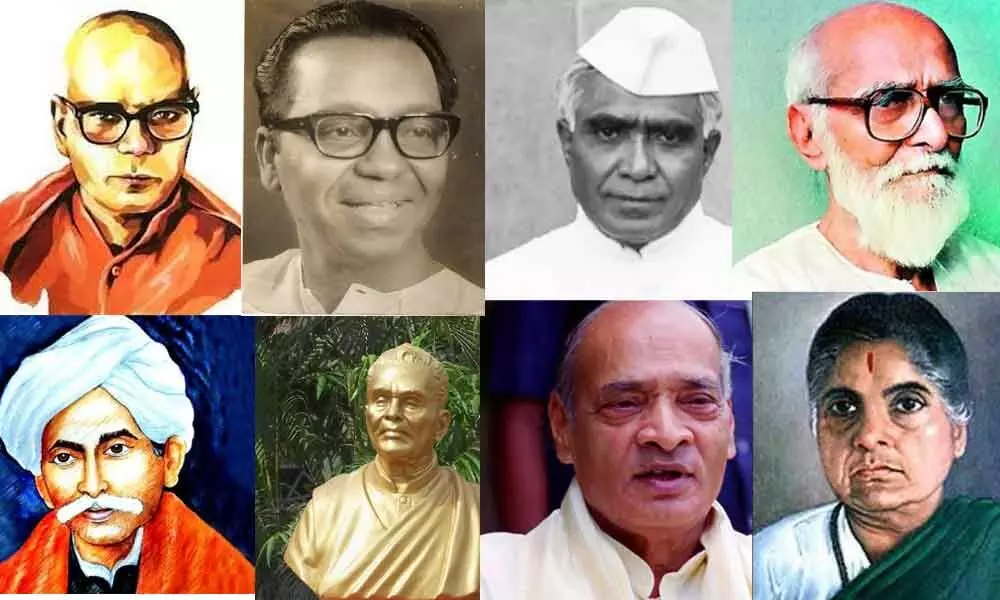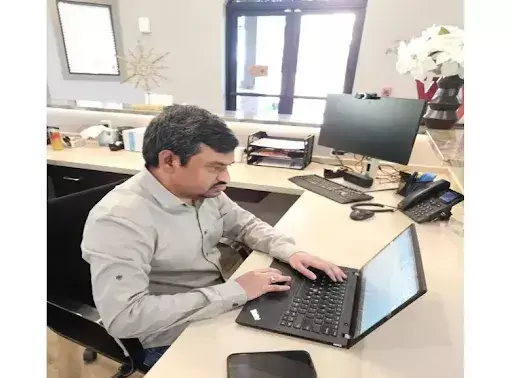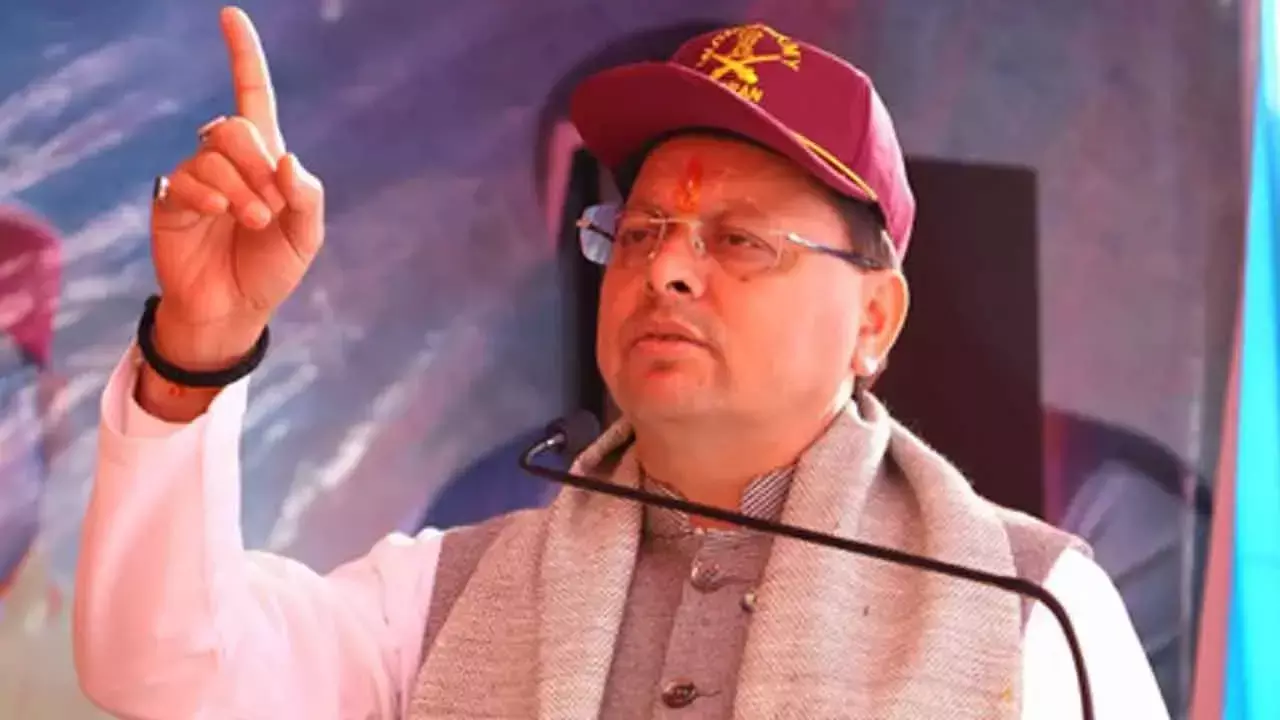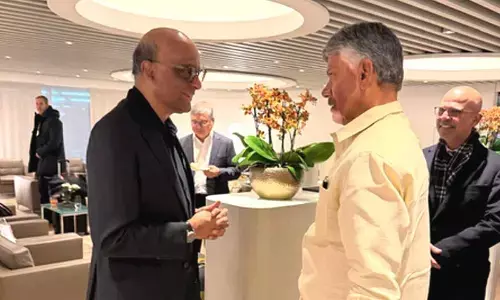Brahmins as reformers

Brahmins as reformers
The caste system as a social hierarchy is still prevalent today. Brahmin is said to be the highest Varna in Vedic Hinduism. The Brahmin Varna consists of priests and individuals and are separated into sub-castes called Gotras.
The caste system as a social hierarchy is still prevalent today. Brahmin is said to be the highest Varna in Vedic Hinduism. The Brahmin Varna consists of priests and individuals and are separated into sub-castes called Gotras. Religious and cultural diversity divides Brahmins into these sub- castes. Only some are priests whereas others have held professions as educators, law makers, scholars, doctors, writers, poets, land owners, and politicians. Brahmin came from the term Brahman, which is a magical force. The Rig Veda is one of the most sacred Hindu scriptures, and it contains the mythological origin of the Brahmin.
In this backdrop, if we study and analyse the role played by Brahmins in the two Telugu States, we can come to a safe conclusion that Brahmins played a vital role in the evolution of the modern society in whatever capacity they were. Revolutionary social reforms took place in the Telugu States in the past and are taking place even today, thanks to the pro-active role played by the Brahmins. From social reforms to modern science, from literature to cinema, from politics to public administration, from spirituality to communism, from traditional values to progressive thinking, the Brahmins played their role perfectly to the precision. This is an attempt to record albeit briefly about the great Brahmin personalities who have contributed and enriched our society at every stage.
To name few among them were: Swami Ramanand Tirtha, Kaloji Narayana Rao, Pamulaparthi Venkata Narasimha Rao, Daasarathi Krishnamacharya, Kondapalli Seshagiri Rao, Dr Burgula Ramakrishna Rao, Pamulaparthi Sadashiv Rao, Rau Bahadur Kandukuri Veereshalingam Pantulu, Gurajada Venkata Apparao, Chilakamarthi Lakshmi Narasimham, Kallakuri Narayana Rao, Gidugu Venkata Ramamurthy, Tanguturi Prakasam Pantulu, Tenneti Viswanadham, Srirangam Srinivasa Rao, Devulapalli Venkata Krishnasastri, Bellary Raghava, Bhandaru Acchamamba, Dr Yellapragada Subbarow, Durgabai Deshmukh and so on.
Swami Ramanand Tirtha, leader of the Hyderabad State Congress, born on 3 October 1903 and died on 22 January 1972, was a freedom fighter, educator and social activist who led the Hyderabad liberation struggle during the reign of Osman Ali Khan, the last Nizam of Hyderabad State. He created a revolutionary movement to integrate Hyderabad State with the Indian Union in 1948.
Kaloji Narayana Rao born on 9 September 1914 and died on 13 November 2002 was an Indian poet, freedom fighter, anti-fascist and political activist of Telangana. He was awarded the Padma Vibhushan in 1992. The Telangana government honored Kaloji's birthday as Telangana Language Day. During his student days and later, he was deeply influenced by and participated in popular movements of the time, like the Arya Samaj Movement, especially in the domain of civil rights. Considered by many to be a freedom fighter he was part of the freedom movement of Hyderabad State and underwent imprisonment under the Nizam.
Pamulaparthi Venkata Narasimha Rao born on 28 June 1921 and died on 23 December 2004, was often referred as the modern day Chanakya and Polyglot. PV's ascendancy to the prime Ministership was politically significant in that he was the first from SouthIndia to held this post. He led an important administration, overseeing a major economic transformation and several home incidents affecting national security of India.Raowas personally responsible for the dismantling of the License Raj. He is often referred to as the Father of Indian Economic Reforms.
Daasarathi Krishnamacharya popularly known as Daasarathi born on 22 July 1925 and died on 5 November 1987 was a leading Telugu poet, united AP State Poet Laurent and a very famous Telugu film lyricist and writer. As a volunteer in the left-wing Andhra Mahasabha movement, Daasarathi travelled from village to village in Telangana to enlighten the public. Mahatma Gandhi and Kandukuri Veereshalingam influenced him. However, he joined the political left, as most of his friends were leftists and communist revolutionaries.
Kondapalli Seshagiri Rao born on January 22, 1924 and died on July 26, 2012)was a very famous artist, painter and was trained in Santi Niketan. He was a teacher in the JNTU College of Fine Arts, Hyderabad.
Dr Burgula Ramakrishna Rao born on 13 March 1899 and died on 15 September 1967 was the first elected Chief Minister of the erstwhile Hyderabad State. He was among the Telugu-speaking leaders to resist the Nizam in the princely state of Hyderabad. Burgula was one of the founding members of the Hyderabad State Congress. He was also involved in promoting the library movement in the State.He eradicated the system of Jaghirdar and makthedar in Telangana and introduced the law of tenancy and became the first Indian land reformer.
Pamulaparthi Sadashiv Rao born on 17 July 1921 and died on 26 August 1996 was a thinker, philosopher, and freelance journalist. He started the monthly magazine Kakatiya Patrika in 1944 in Warangal along with his cousin PV Narasimha Rao, later Prime Minister of India.
Rau Bahadur Kandukuri Veereshalingam Pantulu born on 16 April 1848 and died on 27 May 1919 was a social reformer. He is considered as the father of the Telugu Renaissance movement. He was one of the early social reformers who encouraged the education of women and the remarriage of widows. He also fought against child marriage and the dowry system. He is often considered as the Raja Ramamohan Roy of Andhra. Considering literature as an instrument to fight against social evils, his writings also reflected the same.
Gurajada Venkata Apparao born on 21 September 1862 and died on 30 November 1915 was a noted Indian playwright, dramatist, poet, and writer known for his works in Telugu theatre. He was one of the pioneers of Indian theatre. In 1897, his famous book Kanyasulkam was published by Vavilla Ramaswamy Sastrulu and Sons.
Chilakamarthi Lakshmi Narasimham born on 26 September 1867 and died on 17 June 1946 was a romantic and a social reformer in the tradition founded by Veereshalingam. He was active in the Indian independence movement; he eschewed "foreign cloth" and wore Khadi dhoti, shirt, coat and turban.
Kallakuri Narayana Rao born on 28 April 1871 and died on 27 June 1927 was social reformer, play writer, Cinematographer and nationalist. His novel "Varavikrayam" is about the dowry system prevalent in British India. The film Varavikrayam is based on the novel and play of the same name by him. Gidugu Venkata Ramamurthy born in 1863 and died in 1940 was a Telugu writer and one of the earliest modern Telugu linguists and social visionaries during the British rule.
Tanguturi Prakasam Pantulu born on 23 August 1872 and died on 20 May 1957 was an Indian politician and freedom fighter, Chief Minister of the Madras Presidency, and subsequently became the first Chief Minister of the new Andhra state, created by the partition of Madras State along linguistic lines. He was also known as Andhra Kesari.
Tenneti Viswanadham born in 1896 and died in 1979 was a political figure from Visakhapatnam. He took an active part in India's struggle for independence. He is remembered now for his role in the establishment of a modern and shore-based steel plant at Visakhapatnam.
Srirangam Srinivasa Rao born on 30 April 1910 and died on 15 June 1983, popularly known as Sri Sri, was an Indian poet and lyricist who is known for his works in Telugu literature and films. Noted for his anthology Maha Prasthanam, Sri Sri is a recipient of a National Film Award, a Nandi Award and a Sahitya Academy Award.
Devulapalli Venkata Krishnasastri born on November 1897 and died on 24 February 1980was a Telugu poet, playwright and translator. He is known as Andhra Shelley. Bellary Raghava born on 2 August 1880 and died on 16 April 1946 was an Indian playwright, thespian and film actor, known for his works predominantly in Telugu theatre and cinema. Bhandaru Acchamamba born in 1874 and died in 1905was one of the pioneers in the early stages of women's movement. She is regarded as one of the early feminist historians in India.
Dr Yellapragada Subbarow born on 12 January 1895 and died on 8 August 1948 was a pioneering Indian biochemist who discovered the function of adenosine triphosphate (ATP) as an energy source in the cell, developed methotrexate for the treatment of cancer and led the department at Lederle laboratories in which Benjamin Minge Duggar discovered chlortetracycline (Aureomycin) in 1945.
Durgabai Deshmukh born on 15 July 1909 and died on 9 May 1981 was a freedom fighter, lawyer, social worker and politician. She was a member of the Constituent Assembly of India and of the Planning Commission of India.A public activist for women's emancipation, she founded the Andhra Mahila Sabha in 1937.
Thus, number of Brahmins contributed their lot to the society in their own way, often selflessly.
From the Vedic period to the present day, Brahmins contributed to the society for its welfare, progress, development and its overall wellbeing. No one could ever ignore them or their supreme sacrifice for the sake of society.















